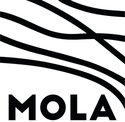Identification and quantification of archaeological projects arising from aggregates extraction in Greater London
Museum of London Archaeology, 2011. https://doi.org/10.5284/1000140. How to cite using this DOI
Data copyright © Museum of London Archaeology unless otherwise stated
This work is licensed under the ADS Terms of Use and Access.
Primary contact
David
Bowsher
Director of Research
Museum of London Archaeology
Mortimer Wheeler House
46 Eagle Wharf Road
London
N1 7ED
UK
Tel: 020 7410 2285
Resource identifiers
- ADS Collection: 1034
- ALSF Project Number: 5812
- DOI:https://doi.org/10.5284/1000140
- How to cite using this DOI
Introduction

The project aimed to identify and quantify past archaeological investigations arising from hard and soft aggregates extraction in Greater London, which currently have incomplete or inappropriately low levels of dissemination. The study provides a basis for a future strategy to improve and widen public dissemination of the results of such investigations, including the deposition of data into a publicly accessible research archive.
The study was conducted through the comprehensive review of all relevant archaeological journals, newsletters and other publications, along with a trawl of archaeological datasets including the Museum of London Archaeology database of past investigations and the Greater London Historic Environment Record. It revealed that only around 20% of projects were considered to be completely disseminated by modern standards at the time of this project, although another 50.3% are known to be actively progressing towards the publication of their results. The dissemination of 44.9% of these latter projects is being addressed by two ongoing major backlog publications, the East London Gravels project and the West London Landscapes, along with publications of archaeological work carried out at Beddington Sewage Farm and Home Farm.
The report provides recommendations for addressing incomplete dissemination. Projects within nine quarry sites across Greater London have been suggested for publication (including analysis and creating and depositing the site archive, in some cases this may involve attempting to locate missing archives). For projects within three quarries, simple assembly of the archive and deposition is proposed. Approximately 25 archaeological investigations have been carried out within areas of aggregate extraction with some level of reporting (eg to the local planning authority) and the reports for these should be submitted to the GLHER as a minimum level of dissemination.







